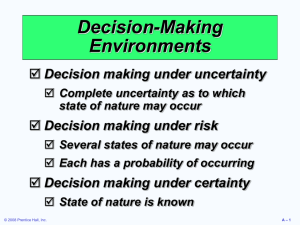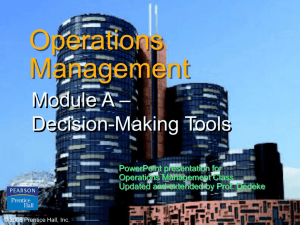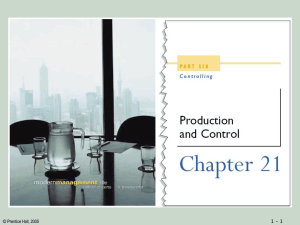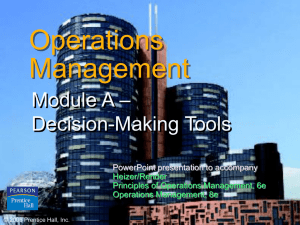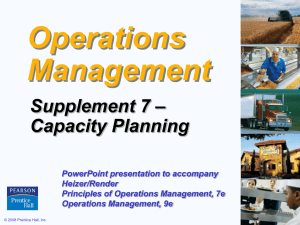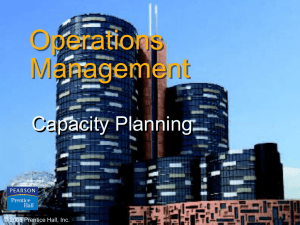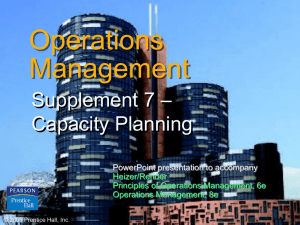Capacity Planning
advertisement
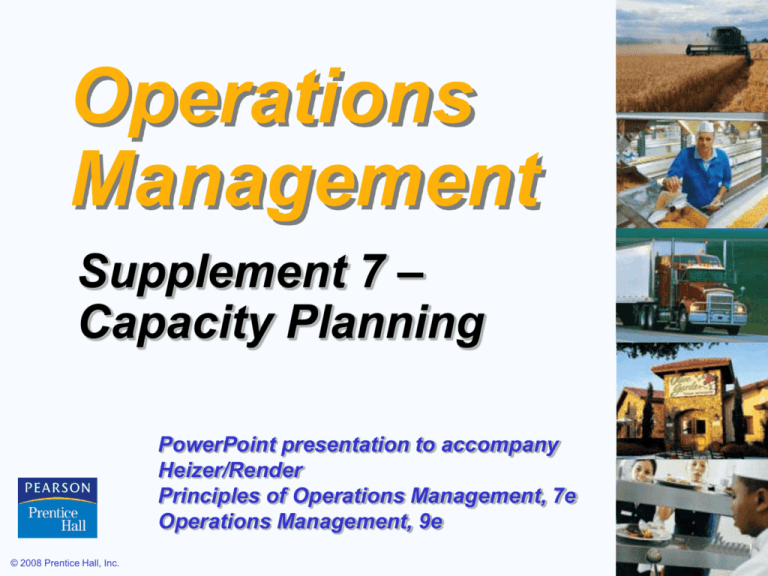
Operations Management Supplement 7 – Capacity Planning PowerPoint presentation to accompany Heizer/Render Principles of Operations Management, 7e Operations Management, 9e © 2008 Prentice Hall, Inc. S7 – 1 Capacity The throughput, or the number of units a facility can hold, receive, store, or produce in a period of time Determines fixed costs Determines if demand will be satisfied © 2008 Prentice Hall, Inc. S7 – 2 Planning Over a Time Horizon Long-range planning Add facilities Add long lead time equipment Intermediaterange planning Subcontract Add equipment Add shifts Short-range planning Add personnel Build or use inventory * Modify capacity * Schedule jobs Schedule personnel Allocate machinery Use capacity * Limited options exist Figure S7.1 © 2008 Prentice Hall, Inc. S7 – 3 Design and Effective Capacity Design capacity is the maximum theoretical output of a system Normally expressed as a rate Effective capacity is the capacity a firm expects to achieve given current operating constraints Often lower than design capacity © 2008 Prentice Hall, Inc. S7 – 4 Capacity and Strategy Capacity decisions impact all 10 decisions of operations management as well as other functional areas of the organization Capacity decisions must be integrated into the organization’s mission and strategy © 2008 Prentice Hall, Inc. S7 – 5 Capacity Considerations Forecast demand accurately Understand the technology and capacity increments Find the optimum operating level (volume) Build for change © 2008 Prentice Hall, Inc. S7 – 6 Managing Demand Demand exceeds capacity Curtail demand by raising prices, scheduling longer lead time Long term solution is to increase capacity Capacity exceeds demand Stimulate market Product changes Adjusting to seasonal demands Produce products with complementary demand patterns © 2008 Prentice Hall, Inc. S7 – 7 Tactics for Matching Capacity to Demand 1. Making staffing changes 2. Adjusting equipment Purchasing additional machinery Selling or leasing out existing equipment 3. Improving processes to increase throughput 4. Redesigning products to facilitate more throughput 5. Adding process flexibility to meet changing product preferences 6. Closing facilities © 2008 Prentice Hall, Inc. S7 – 8 Demand and Capacity Management in the Service Sector Demand management Appointment, reservations Capacity management Full time, temporary, part-time staff © 2008 Prentice Hall, Inc. S7 – 9 Break-Even Analysis – Total revenue line 900 – 800 – Cost in dollars 700 – Break-even point Total cost = Total revenue Total cost line 600 – 500 – Variable cost 400 – 300 – 200 – 100 – Fixed cost | | | | | | | | | | | – 0 100 200 300 400 500 600 700 800 900 1000 1100 | Figure S7.6 © 2008 Prentice Hall, Inc. Volume (units per period) S7 – 10 Decision Trees and Capacity Decision Market favorable Market unfavorable Market favorable Medium plant Market unfavorable Market favorable Market unfavorable © 2008 Prentice Hall, Inc. S7 – 11







